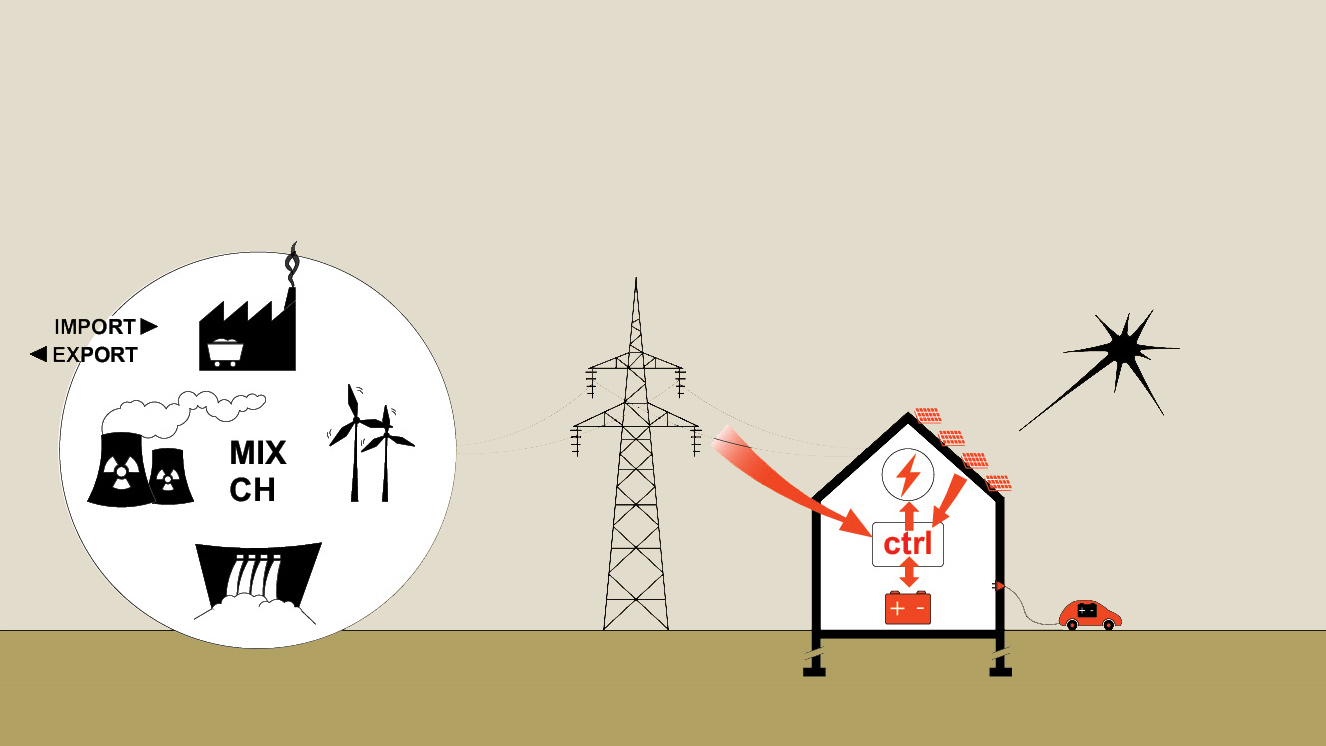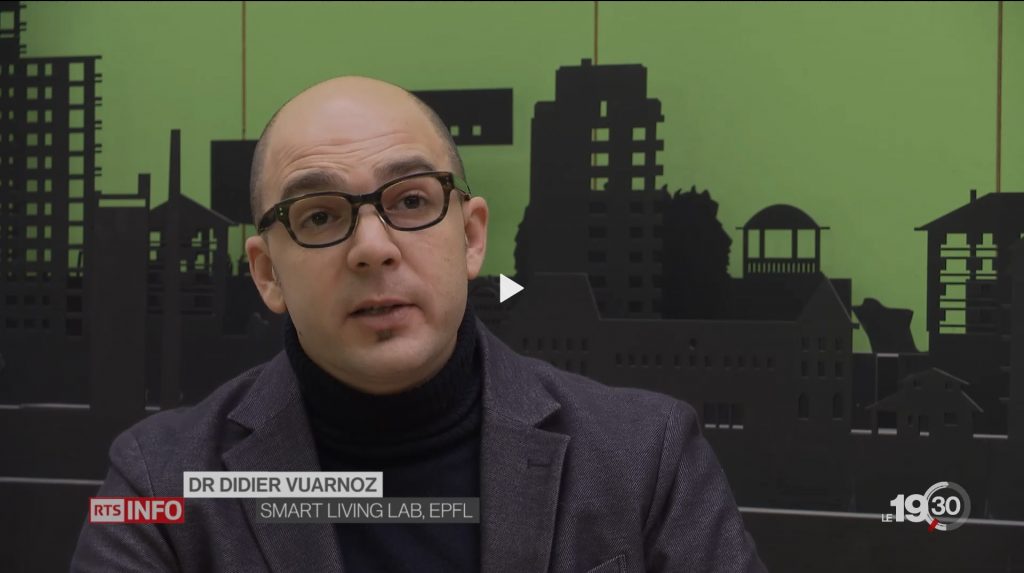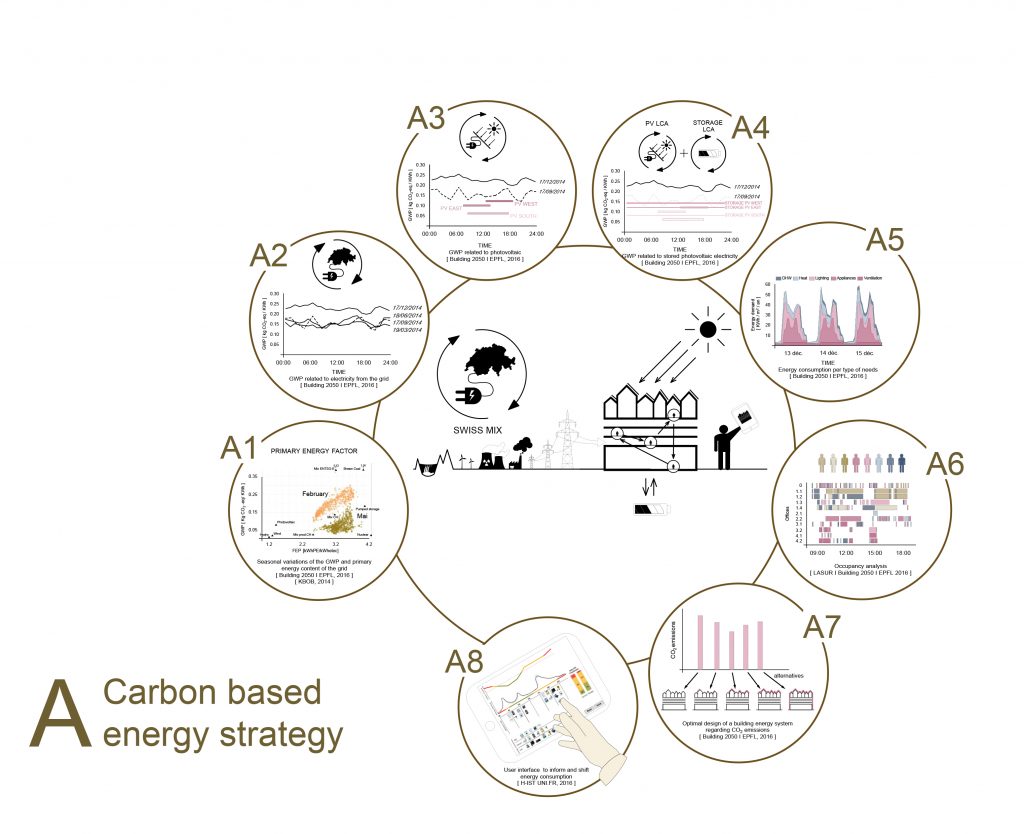Carbon Based Energy Strategy

The outcome sought through this experiment is to optimize the correlation between renewable energy availability and the building’s energy demand, by:
- Using the grid’s energy at the moments when it is greener
- Producing renewable energy in situ
- Storing green energy to be able to use it when the grid is more CO2 charged
- Communicating with users in order to encourage them to plan their energy consumption at the hours of greatest availability of renewable energy, or of better quality of the grid’s energy.
Because renewable energy is not constant, a methodology is necessary to balance carbon footprint on a yearly basis with an hourly time accuracy. This strategy needs to be applied to the grid’s energy supply as well, for the CO2 content of the Swiss grid also varies significantly, due to its different sources and its dependence on imports from less performing grids at certain times of the day or of the year.
The objective of this research was to synchronize a low-environmental-impact electricity supply and the building’s electricity consumption. Nowadays it is still of common practice to use yearly-averaged values of electricity impact factors for LCA. It is also well accepted to size and design renewable and storage energy system on the basis of an annual energy balance (e.g. NZEB). Demand side management is usually considered as an important lever for energy peak shaving.
Adopted approach for the SLB research program on carbon based energy
This research effort represents the first attempt to assess impact factors (CED, CEDnr, GWP) for the Swiss grid at an hourly time step, during a whole year. The influence of their differences as well as the resulting patterns in the temporal evolution of these impact factors have been investigated. The dynamic environmental footprints of the electricity available from the grid was here compared to the ones that could be produced or stored on-site.
This comparison is meant to be used as a decision tool, to design a performing building energy system that will guarantee positive resource payback time.
The potential of a carbon-based electric load shifting has been proposed for GHG emission mitigation at the building level. The assessment results – still under investigation – will indicate if such a strategy is efficient.
For further details, see publications below


Partners
Human-IST, University of Fribourg
Energy Institute, Haute Ecole d’ingénierie et d’architecture de Fribourg
Funding
State of Fribourg – Switzerland
Please note that the publication lists from Infoscience integrated into the EPFL website, lab or people pages are frozen following the launch of the new version of platform. The owners of these pages are invited to recreate their publication list from Infoscience. For any assistance, please consult the Infoscience help or contact support.
